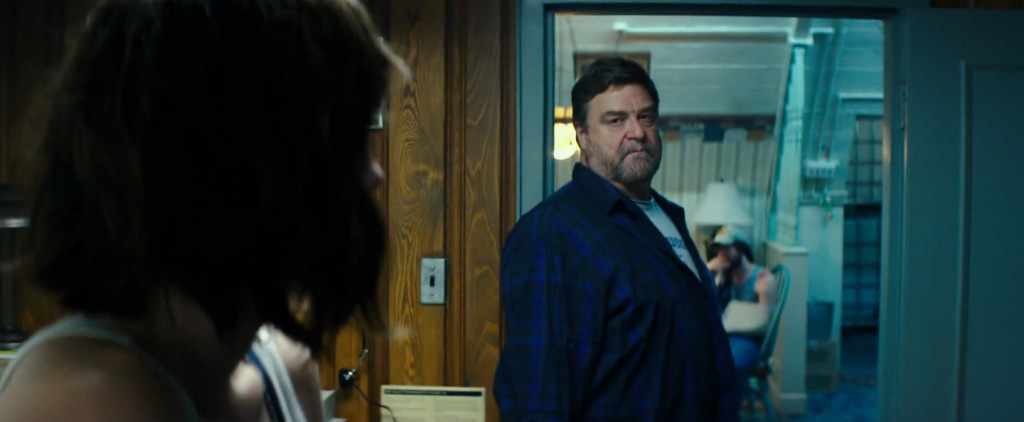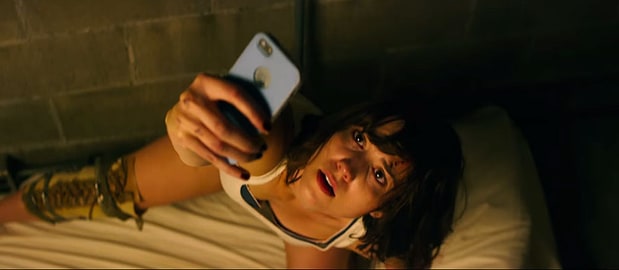Genre: Contained Thriller
Premise: When a young woman wakes up in the fortified cellar of a man’s farm house, she must figure out if the mysterious reason why he says she’s there is true or not.
About: This was just a regular spec script until JJ Abrams’ company, Bad Robot, decided to adapt it into the next chapter of the Cloverfield franchise. How “Cloverfield-y” it will be is up for debate. And since this is the original 2012 draft, before the changes were made, we won’t know for sure until the movie arrives. However, based on the recent trailer, I can confirm that a ton of it is similar. It will just somehow tie into that giant monster who destroyed New York City. Newcomers Josh Campbell and Matt Stuecken wrote the script. It’s been said that Whiplash writer-director Damian Chezelle helped with the rewrite. I wonder if that means there will be a dance number?
Writers: Josh Campbell & Matt Stuecken
Details: 95 pages (April 11, 2012 draft)
For those of you bemoaning the fact that your movie choices this weekend were limited to either Ride Along 2 or Michael Bay’s attempt at being serious, rejoice in the fact that big Hollywood movies are coming sooner than you think. Deadpool comes out in the traditionally dead month of February. Batman vs. Superman is here in March. And just last week we learned we were getting a new Cloverfield movie, also debuting in March.
While JJ has shied away from the mystery box as of late, due to the internet repackaging his box into some kind of movie-killer, he did dig back into his bag of tricks with the release of this trailer, surprising everyone last week with the news they’d getting another Cloverfield. So how good is the script that inspired this semi-sequel? No mystery box on that one. It’s very good.
18 year-old Michelle Burke has just woken up in a small room in her underwear with no idea how she got there. No sooner is she putting the pieces together than a 40-something man, Howard Stammler (what a great character name!) walks in with food. She attacks him, but he’s too big for her. And what he tells her next is so shocking, it turns her world upside-down.
He’s not here to hurt Michelle. He’s here to help her. According to Howard, some huge attack just went down. All of the cities have been blown to bits, and there’s some sort of radioactive chemical in the air that’s killing everyone. As this was all going down, Howard spotted Michelle unconscious in her crashed vehicle on the side of the road. He couldn’t let her die there, so he took her with him.
Howard, it turns out, is one of these preppers, weirdoes who have a full service survival cellar in case the end of the world happens. And because of his weirdo-ness, he’s saved both himself and Michelle. That is, of course, if he’s telling the truth, which Michelle is pretty sure he isn’t.
But she’s stuck in a tough spot. On the 1% chance that he’s telling the truth, if she tries to escape, her skin might dissolve and her eyeballs turn to jelly. And everything Howard tells her has just enough of a ring of truth to it to make her think twice.
Complications arise when a third person crashes the party, Nate. Whereas Howard is old and chubby, Nate is young and, well, sizzling. So when he starts selling Michelle the same story, she’s more inclined to believe him. Making things even weirder, Howard and Nate know each other. But something happened between them that’s soured the relationship.
Is this really happening? Or could Michelle be the victim of some weird fucking game? Every time she thinks she’s figured it out, something new pops up to cast doubt again. This is what helps keep The Cellar a mystery until the very last page.
Arnold Schwarzenegger used to be the best bodybuilder in the world. And if you hear him talk about that time of his life, he keeps going back to one principle over and over again: You have to shock the muscles.
He says, “When I go to the gym and I’m about to work out, my muscles already know what I’m going to do. They’re already saying to me, ‘I know you’re going to go do 3 sets of 250 pound bench presses. Then you’re going to move over to the dumbbell rack and do 3 sets of 70 pound curls. Then you’re going to come back to the bench and do 4 sets of 200 pound incline presses.”
And Arnold’s whole philosophy was, “You think I’m going to do this? You’re wrong. I’m going to shock you. Today, I’m going to start out with THREE HUNDRED and fifty pound bench presses. Then instead of doing my usual bicep curls, I’m going to do pull-ups…” By shocking the muscles, Arnold argues, they have no option but to grow.
Readers are a lot like muscles. They know your routine already. And they’re used to it. So all the tricks you’ve learned along the way? They’ve seen them. And the only way to make a reader sit up and pay attention (grow), is to shock them. And by that I don’t mean some giant shocking plot twist. And I don’t mean a jump scare. I mean show them something unexpected. And preferably, do it right away, so that the reader immediately knows that this is a writer who’s going to go about the routine differently.
I’ve read so many of these contained cellar/bunker/basement scripts by now, I can’t keep track of them anymore. So I know what’s coming almost all the time. There are only so many ways you can spin this situation. Or at least I thought. The Cellar has me rethinking that belief.
Right away, we have this girl in a room. And she wakes up. And there’s a 40 year-old man. And he’s creepy-looking. And I’m thinking to myself, “Okay, here we go. Been down this road before.” But immediately, the man says something I wasn’t prepared for. As the woman attacks him, he doesn’t fight back. He holds up his hands in defense and tells her, “I’m here to help you.”
Those words completely threw me off. Help her??? Huh? How can a man holding a woman prisoner be helping her? And it was that moment I knew this script would be different.
I’ll give you another example. Later in the script, the third guy shows up, Nate. Again, I’ve been down this road before. It’s really one of the only things you can do in these contained movies – is add that mysterious 3rd character who shows up around the midpoint. It adds a new dimension to the story and keeps it from getting stale.
But almost all the time, the character is weak. He’s not there as a real person, but rather as a desperate plot device to keep things interesting. Writers will ride the mystery of this character as long as they can until they have to explain him. And when they do explain him, it’s always boring and obvious.
When Nate comes in though, Howard looks at him and seems upset. There was a history between these men. Something had happened between them. And that totally threw me again. In the past, these characters have always been complete unknowns. The fact that these two knew each other opened up this whole new avenue to explore in a contained thriller. How did they know each other? Why didn’t Howard like him? How is this going to affect Michelle?
Another thing these writers do well is that they use backstory to ADD to the story as opposed to just provide context.
One of the huge mistakes beginner screenwriters make is they include backstory (characters talking about their past, or worse, flashbacks) to provide context for their characters. A character will go on a rant about how when he was in high school, he was an outcast, and it’s like, “Who cares??” Backstory works best when it CHANGES THE DYNAMICS OF THE CURRENT STORY.
So here, for example, when Nate comes in, he tells Michelle in confidence that Howard’s wife was murdered. The police never solved who did it, but there was a lot of speculation that it was Howard. So you see that we have this backstory on Howard now (his wife was murdered) that changes the dynamic of the present. We’re now more suspicious of Howard. If he killed his wife, who’s to say he won’t kill them? That’s what good backstory revelations do.
The same thing happens again with Howard’s daughter. Before Nate shows up, Howard tells Michelle a story about his daughter. But later, when Nate comes, he tells her Howard doesn’t have a daughter. And so, again, backstory is being used to affect present story.
I’m not surprised at all that this caught Bad Robot’s attention. These writers took a potentially cliché setup and turned it into something really fresh and fun.
[ ] what the hell did I just read?
[ ] wasn’t for me
[ ] worth the read
[x] impressive
[ ] genius
What I learned: One of the ways to find a new way into an old story is to shift the default character dynamic. So if you look at the “Man keeps woman prisoner” scenario, ask yourself how you could change that. Maybe the man is actually helping the woman. This creates a whole new movie. The Die Hard setup. Man must shut down a group of terrorists who have taken over a building/boat/airport. What if you found a way to make the terrorist the one who had to save the day? Change the dynamic and you have an entirely new story.




